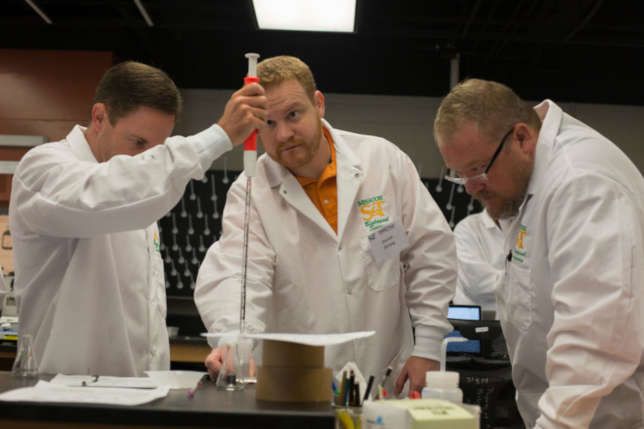Rural Districts Get Project Lead the Way Funding
- By Dian Schaffhauser
- 10/22/19
Rural school districts in Missouri are gaining more STEM access through a $250,000 state-grant being administered by Missouri University of Science and Technology. The funding is intended to expand the use of Project Lead the Way curriculum. The nonprofit provides project- or problem-based experiences to students in grades pre-K-12 in the areas of computer science, engineering and biomedical science.
David Hosick, senior program director of PLTW at Missouri S&T, has been traveling the region distributing grants to the school districts.
"We are grateful to the State Legislature for supporting this expansion of Project Lead The Way to equip today's Missouri students with the skills they will need for the jobs of the future," said Hosick in a university article about the program. "The overarching goal of this effort is to increase the ability of the region to attract new jobs and new investment by improving the educational aptitude and achievement of students and the competitive position of the school district."

Missouri teachers get Project Lead the Way training at Missouri S&T. Source: Photo by Sam O’Keefe/Missouri S&T
The university also serves as one of 17 PLTW training partners in the country, which provide professional development to teachers, to help them integrate science- and technology-based lessons into their instruction. One teacher who recently attended the training, Missouri S&T graduate Jessica Schulze, is currently in her first year of teaching. She said the use of PLTW curriculum addresses that typical student comment: "Well, when am I ever going to use this?" With the hands-on activities she can now incorporate into her classroom, she's able to provide the answer, she said: "They're applying what they learn right there. They're doing hands-on activities and it's keeping them engaged. They're understanding, 'Oh, this is where you can use this' or 'This is why you use this.'"
To receive the grants, school districts must apply for the funding. So far, 17 of 41 eligible school districts in the state had received funding.
About the Author
Dian Schaffhauser is a former senior contributing editor for 1105 Media's education publications THE Journal, Campus Technology and Spaces4Learning.